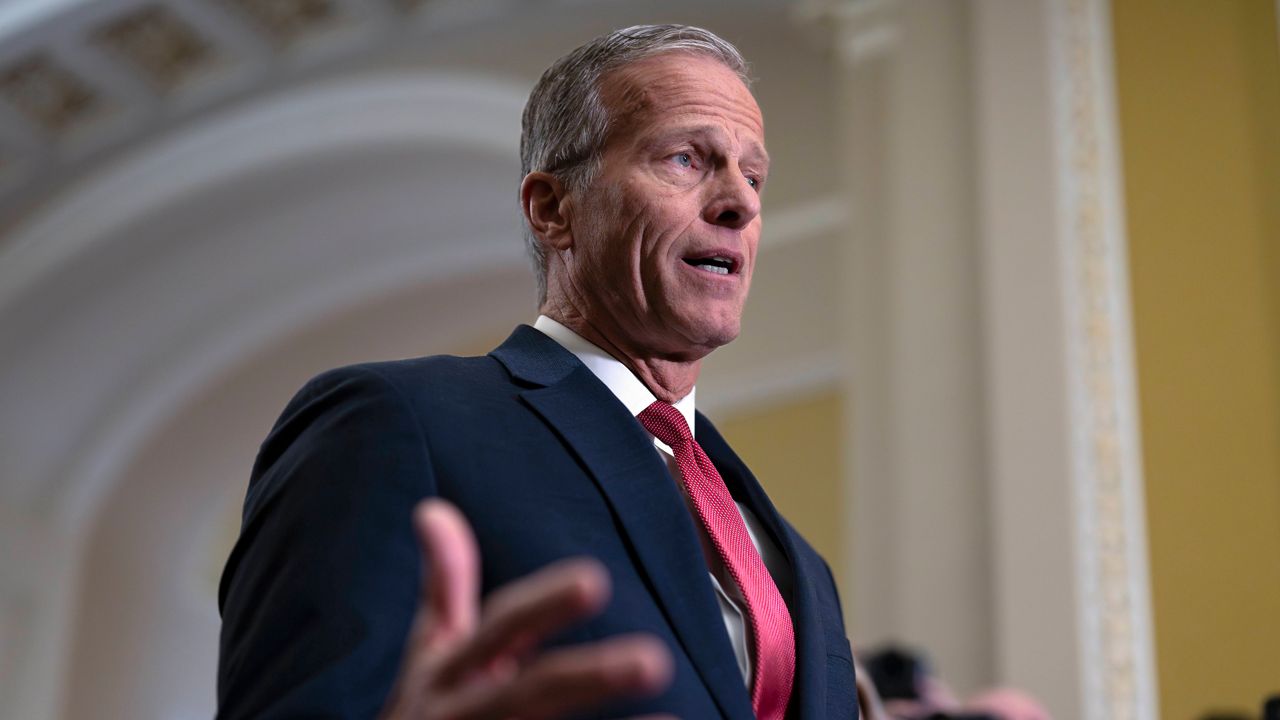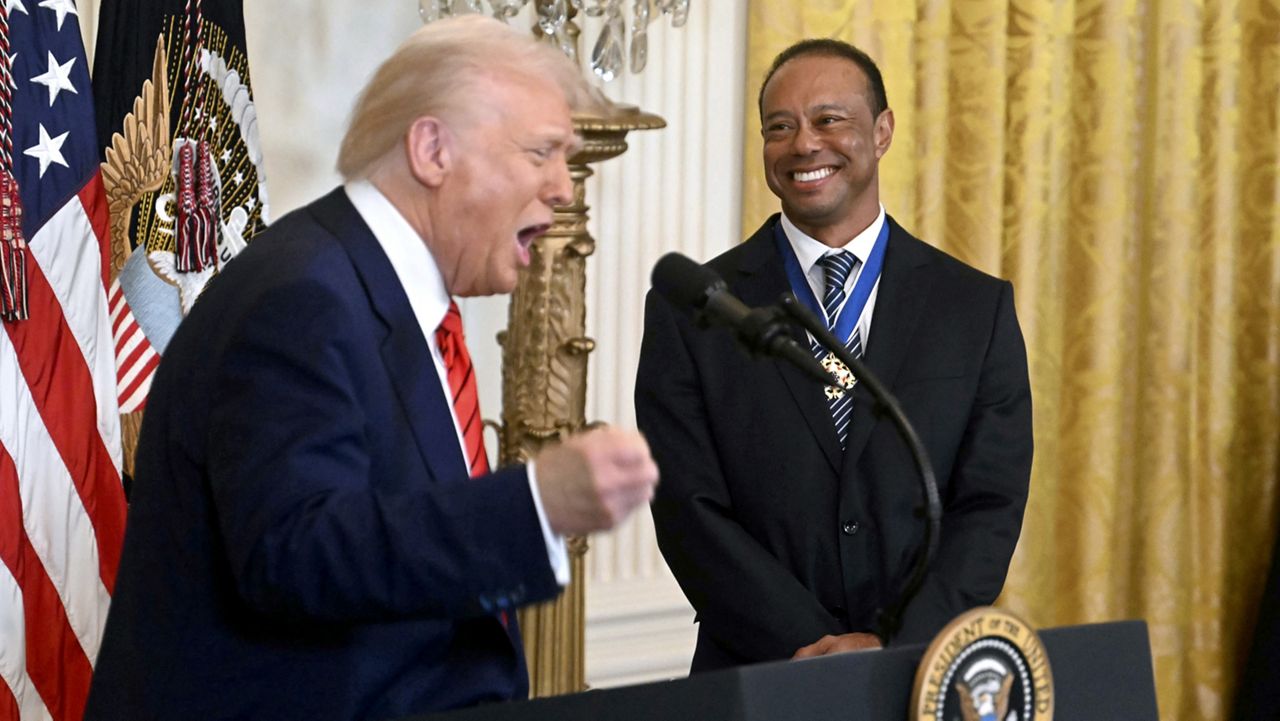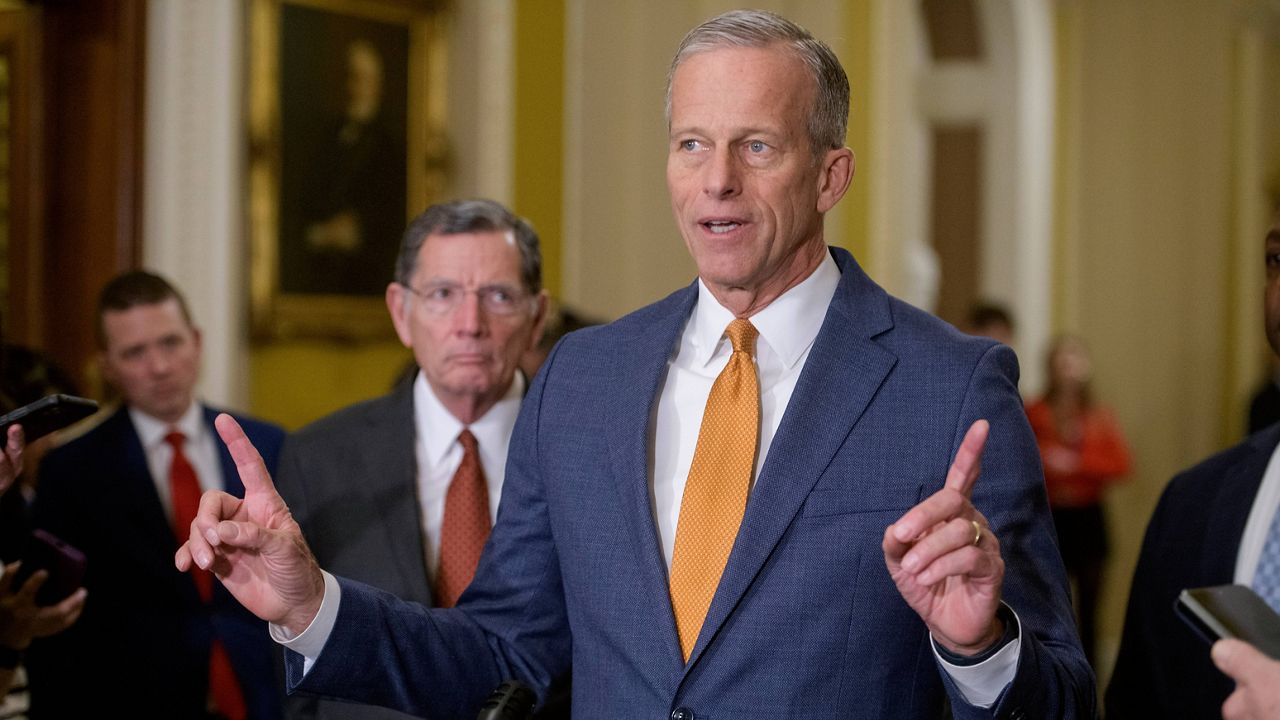Republicans were unable to build on their Trump-era gains within the Latino community throughout most of the country in the 2022 midterms, a new report from a research group focused on the Latino vote suggests.
The trend is of peak interest to both parties as they try to court a demographic group that makes up a tenth of the electorate and plays a key role in swing state elections as the country barrels towards the 2024 presidential election.
And while the report by Equis Research, a firm founded by Obama administration and campaign alumni, shows that Latinos are anything but a monolith, the historic association Latinos have with the Democratic party served as something of a ceiling for Republicans.
“A segment of Latino voters who had shifted to Republicans in 2020 stayed there. But the GOP couldn’t make progress beyond that share in 2022,” the report read. “The forces that kept many Latinos viewing Democrats (or not-Republicans) as the default option held firm, to the point that critical Latino voters would rather stay home than vote GOP.”
The analysis concluded that the peak of Latino support for the GOP — roughly 40% in 2020 — leveled out in 2022 in competitive races. Florida, where Republican campaigns invested heavily in Spanish-language media and the issues prioritized by voters differed compared to other states, was the exception. Democrats in Florida saw a decline in Latino support that allowed Republicans to garner a majority of the Latino vote for the first time in 15 years.
“At the end of the day, there turned out to be basic stability in support levels among Latinos in highly-contested races, despite another steep decline for Democrats among Hispanics in Florida,” the report said. “In short: the GOP held gains they had made since 2016/2018 but weren’t able to build on them.”
Equis Research analyzed polling data and campaign spending to compare Latino support for the GOP in 2016 through 2020 to the 2022 midterms.
While Hillary Clinton earned roughly 70% of the Latino vote in her 2016 presidential run, Joe Biden saw around 60% support from Latino voters, a number that stayed stable during the 2022 midterms.
The report found that Latino voters who ranked cost of living and the economy as their top issue in 2022 “voted overwhelmingly for Republicans,” but turned out at lesser rates than those who chose abortion as their top issue — a group that “voted in dominant fashion for Democrats.”
Abortion motivating voters to choose Democrats was a trend seen across the electorate during the 2022 midterms in the wake of the Supreme Court’s Dobbs decision last year to overturn Roe v. Wade, the precedent-setting case that legalized abortion in 1973.
“Economic and cost of living concerns did boost Republicans among Latinos, but were (a) undercut by low turnout and (b) offset in great part by a Dobbs effect,” the report said.
And despite the percentage of Latino voters disapproving of Biden only growing over the course of his term, Democrats “likely won Latinos who ‘somewhat’ disapproved of the president,” the researchers concluded.
“The fundamentals, including rising costs & Biden job approval, looked dire for Democrats. But in the battleground states, inflation voters stayed home, Dobbs & democracy voters didn’t,” they wrote.
Immigration was also less of an issue in 2020 and 2022 than it was in 2016, the report said, when Trump’s anti-immigrant policies were front and center. In the latter elections, COVID-19 and the economy became Latino voters’ top priorities.
“That’s why a question going forward is what happens when immigration reform falls out of the headlines and off the agenda,” the report said. “Public fights around the treatment of immigrants have in the past drawn a line in the sand — helping some Latinos sort out who is welcoming (or not) to people like them.”
The report also found Republican efforts to court Latino voters outside of Florida seemed to fall flat, with only conservative Latinos reporting a perceived increase in effort by the GOP while Latinos of all political leanings, including conservatives, told researchers they felt there was increased outreach by Democrats.
Moderates in battleground states — Arizona, Colorado, Florida, Georgia, Michigan, North Carolina, New Mexico, Ohio, Pennsylvania, Texas, and Wisconsin — on average felt Republican outreach had stayed level while a majority of nearly 28 percentage points felt Democrats made more of an effort to win their vote compared to previous years.
The exception to this rule was in Florida, where moderate Latinos felt Republicans made a greater effort than Democrats and liberal Latinos saw Democrats’ efforts as lacking.
Spending on Spanish-language media seemed to also play a key role, the researchers wrote. In Nevada, Democratic Sen. Catherine Cortez-Masto doubled the spending of her Republican opponent, state Attorney General Adam Laxalt, in Spanish-language TV, radio and digital advertising.
While Laxalt’s name recognition grew from 32% to 71% among Nevada Latinos in the year leading up to the election, by October his favorables were underwater by 13 percentage points among Univision and Telemundo watchers.
In that race, Republican’s Spanish-language advertising largely focused on crime, a top issue among just 4 to 6% of Nevada Latinos who get their news in Spanish. In contrast, Democrats spent heavily on ads about prescription drug and gas prices, an issue Equis argued was more relevant to the 25% of the same cohort who ranked cost of living as their top issue and the 33% who named the economy.
In contrast, Florida Gov. Ron DeSantis, now running for the Republican nomination for president, spent ten times more than his Democratic opponent on Spanish-language media over the course of the race. Ultimately, 62% of Florida Latinos without a party affiliation broke for DeSantis, as well as 63% of infrequent voters.
The report noted that Florida’s Cuban-American community strongly supported Republicans and that moderate Latinos were “baptized politically during the Trump era,” making them more inclined to vote Republican than Latinos in other battleground states.
Whether the conditions in Florida can be replicated in other states remains to be seen, the researchers wrote.
“In Florida, there was a story shaped around the specter of socialism among those closest to the experience,” the researchers wrote of voters of Cuban and Latin American heritage. But those arguments “didn’t work with Puerto Rican voters in the same way, because they didn’t share that trauma.”
Ultimately, the report concluded, Latinos — like any other group — look to candidate quality and parties that prioritize the issues they care about before heading to the polls.
“A tectonic shift in the national Latino vote, along the lines of what we saw in Florida perhaps, is still theoretically possible. But there is no evidence for it in the 2022 elections,” the researchers wrote. “That doesn’t mean Latino voting patterns have become static. Quite the opposite: Latinos, like Black and AAPI voters, are at a highly dynamic point. They remain one of the great wildcards in US elections.”




)



